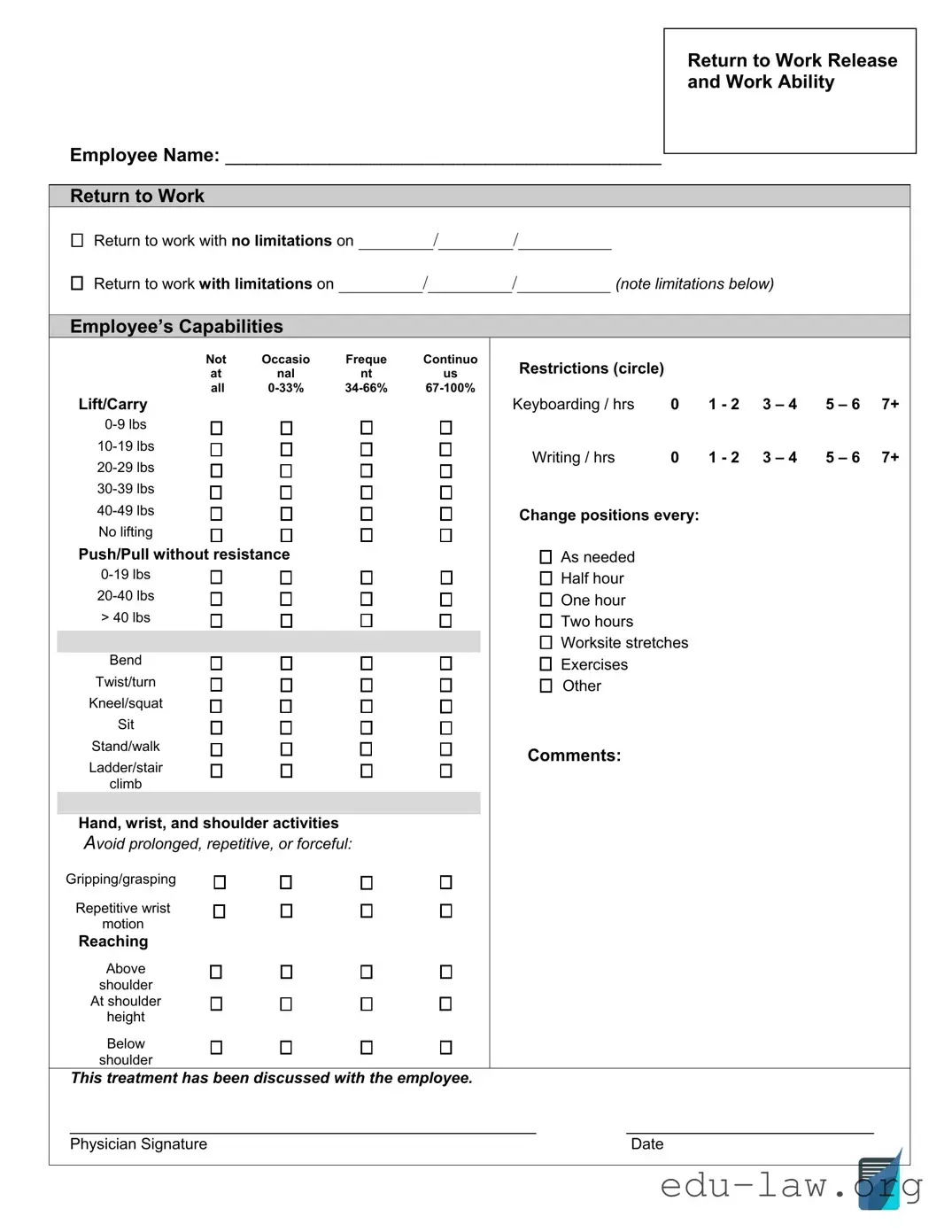The Employment Verification Letter is similar to the Work Release form in that it both serves as official documentation related to a person's employment status. This letter is typically used by current or former employees to validate their employment history to lenders, landlords, or other agencies. Like the Work Release form, it must be signed and accurately reflect the employee's job title, duration of employment, and salary, which serves as a verification of the individual's ability to commit to various obligations like rental agreements or loan repayments.
The Temporary Leave of Absence Form allows employees to formally request permission to take time off from work, similar to how a Work Release form requests permission to engage in external employment or activities during incarceration. Both documents serve to notify the employer of an employee's status and are often a prerequisite for maintaining job security. Approvals are required in both cases to ensure that the request aligns with company policies or legal regulations.
The Parole or Probation Agreement outlines the conditions that an individual must follow while released from incarceration, which often includes work conditions. Like the Work Release form, this type of agreement governs the individual's behavior and activities during their period of release from confinement. Violating these terms can lead to consequences, similar to how a breach of the Work Release terms might affect an individual’s initial release from custody.
The Permission Slip for Minors is a document that parents or guardians sign to allow minors to engage in specific activities, such as field trips or sports events. Both the Permission Slip and the Work Release form require the consent of an authority figure—whether a guardian or a correctional officer. This ensures that the minor or incarcerated individual is permitted to participate in the activities outlined in the document, reflecting accountability and responsibility.
The Leave of Absence Request Form is utilized by employees seeking time off for various reasons, such as medical issues or family matters. Much like the Work Release form, it must be submitted to an authority (such as a supervisor) for approval. Both forms represent a structured process for requesting permission, and both detail the relevant times and reasons for the requested absence, helping maintain clear communication between employees and management.
Job Offer Letters are formal documents provided by employers to prospective employees that confirm a job offer. These letters typically outline employment terms, including start date, salary, and job responsibilities. Both the Job Offer Letter and the Work Release form formalize a work arrangement; however, the former engages an employee prior to starting, while the latter addresses an employee's ability to maintain work post-incarceration.
The Release of Liability Waiver is a document individuals sign to acknowledge the risks involved in a particular activity and waive their right to sue in case of injury. This is similar to a Work Release form, as both require individuals to acknowledge the conditions of participation in an activity. Having a clear understanding of the risks involved is crucial for both individuals in a work release program and those participating in activities requiring a waiver.
The Affidavit of Support is a document often prepared as part of an immigration process to prove financial support for a prospective immigrant. It bears similarities to the Work Release form in that both documents require a person to agree to support or be responsible for another in a defined capacity. In this case, it is financial, while the Work Release form obliges individuals to adhere to work-related responsibilities and terms.
The Non-Disclosure Agreement (NDA) establishes confidentiality between parties who exchange sensitive information. Although primarily concerned with protecting proprietary or confidential information, NDAs are similar to Work Release forms in that both seek to establish a binding agreement where the parties adhere to specific expectations. This agreement serves to protect the interests of the involved parties, whether through confidentiality or compliance with regulations while on work release.
The Medical Release Form is used to allow medical providers to share an individual’s health information with third parties. While primarily focused on health information, its principles are akin to those in the Work Release form, as it grants permission for specific actions to occur. Both documents require explicit consent and can impact an individual’s ability to navigate related obligations, whether concerning employment or health management.

